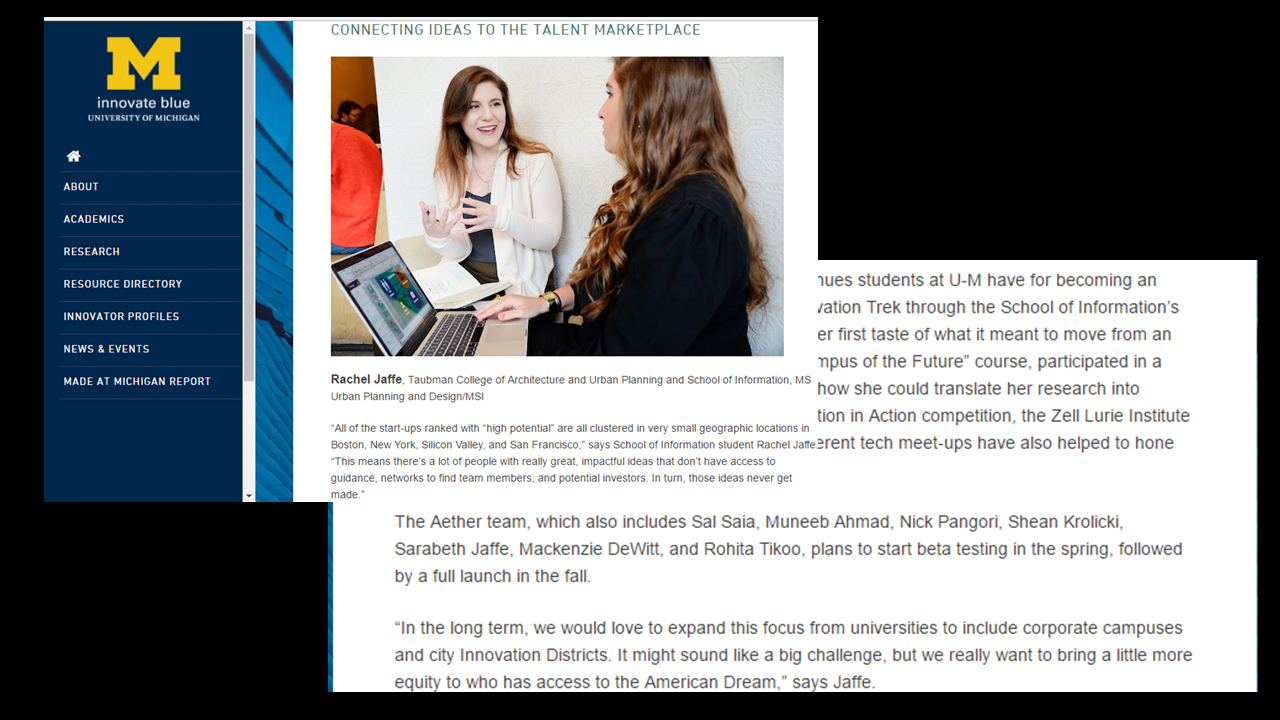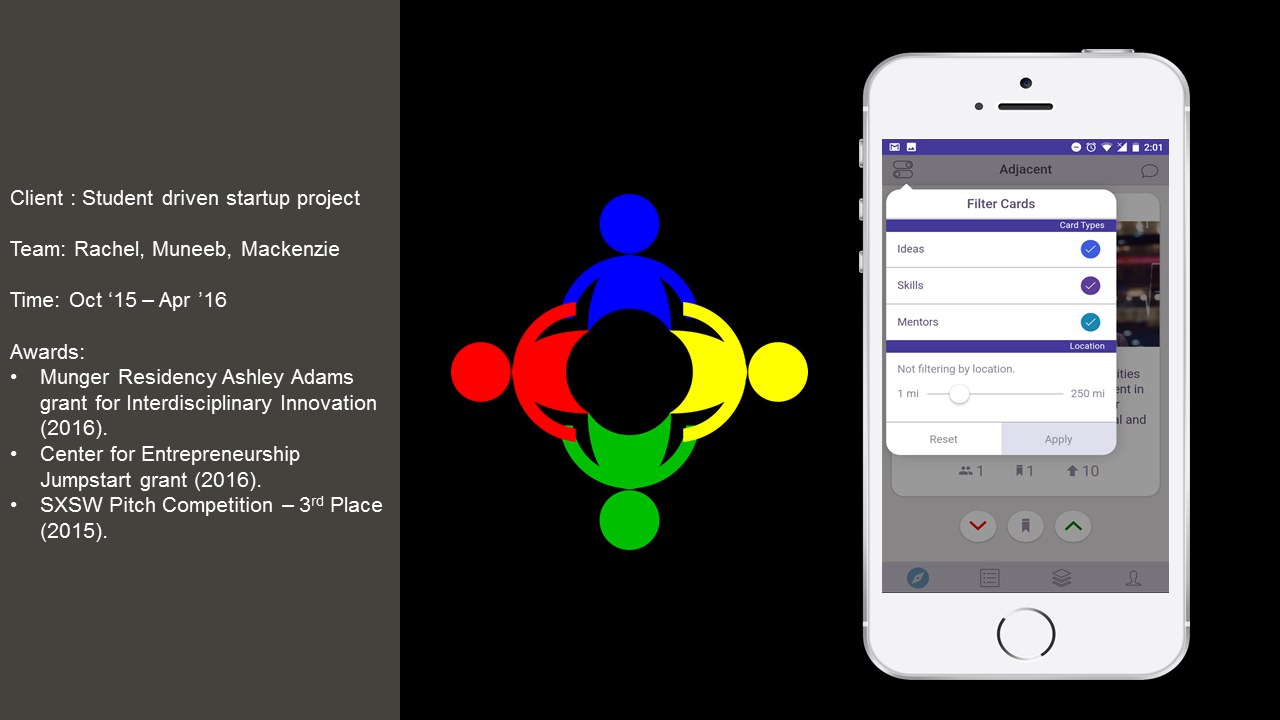

I was the UX Researcher on the team Aether and contributed to the development of the minimum viable product (MVP), which was geared towards students on campus.
I performed generative research to understand if the issue of collaborating on campus was worth solving or not. I used methods like in-depth user interviews and surveys to learn about students and staff behaviors and needs in the early stages of the project.
When the team started to develop concepts and features, I performed iterative evaluative studies like concept testing interview to inform further solution design decisions.
I collaborated with the product designer and developers on our team to ensure that we followed the participatory design process.
I also communicated with the team members and presented them with the recommendations related to people nearby applications (PNA).
I led the planning for the recruitment and scheduling of participants for the user interviews and concept testing.
After conducting extensive in-depth user interviews of University of Michigan's students and staff, we were challenged to design a solution that would connect people with ideas to people with skills in a way that creates equality of opportunity and a supportive community. It was essential for us to understand and analyze the problems faced by students/staff with respect to connecting with people to share and implement their ideas.
As a part of the UX research, I identified the below questions which needed an answer:
Is the problem of collaboration with other students on campus a problem worth solving?
How do users perceive these People Nearby Applications in the context of collaborating with new people for academic or business project purposes?
How would the users gain trust in one another to share their project ideas?
The population that I intended to study would comprise of people within the age group of 18yrs to 60yrs, based in the USA. Also, the population would include people with technical and non-technical skills.
The population to be studied was just too large that it was impossible to include every individual hence by using the techniques of Convenience and Snowball sampling , I could find my sample from the target population.
My sample would contain students, faculty, staff and other working professionals too.
The qualitative method of data collection was one to one in-depth user interviews (in person for 45 min to 1 hour) with 16 users from the target user groups. This research method helps us uncover what’s important to the users and what they expect from the solution.
I used online web based surveys as it is one of the best tools to find out who the potential users are and what opinions they hold with respect to the People Nearby Applications for academic and business purposes.
I utilized the University of Michigan email lists for students, faculty, staff which would be used to send the online survey links to them. I used social media groups (Facebook and Twitter) of students and entrepreneurs in or outside Ann Arbor. I created the survey using Qualtrics application.
Before deploying survey directly to the various distribution channels I followed the below mentioned process as per the planned time frame.
Let ‘T’ be the deadline for submitting the results of the survey and 1 is the first day of the month.
Also it was important to conduct pilot study of the survey such that I could improve the internal validity of the questionnaire. Hence, I could decide to revise, shorten and if possible, pilot again.
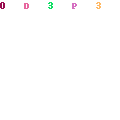
The survey comprised of a set of questions that allowed people to describe themselves, their interests, and their preferences regarding the problem statement in a structured way. Then I used the integrated data analysis tools provided in Qualtrics, which revealed broad characteristics about the users and extract interesting patterns.
From the user interviews the data obtained were interview notes and audio recordings. This helped us create user stories and determine content and features before any solution could be developed in real.

The user insights related to the needs statement became the foundation of the later design concepts.
Results from the concept testing interviews helped to guide the product design decisions. Few of these features went in the final MVP of Aether.

I realized that the online web based surveys are highly vulnerable because there is a lack of direct contact with the respondents, accuracy depends on perceptions that people have of themselves and their willingness to report honestly.
Users are practical and tangible which means that they typically have no idea how they might use a new mobile technology based on the description that I give them alone.
As the Aether team we participated in various competitions and won a few too. Few of the events have been mentioned below.
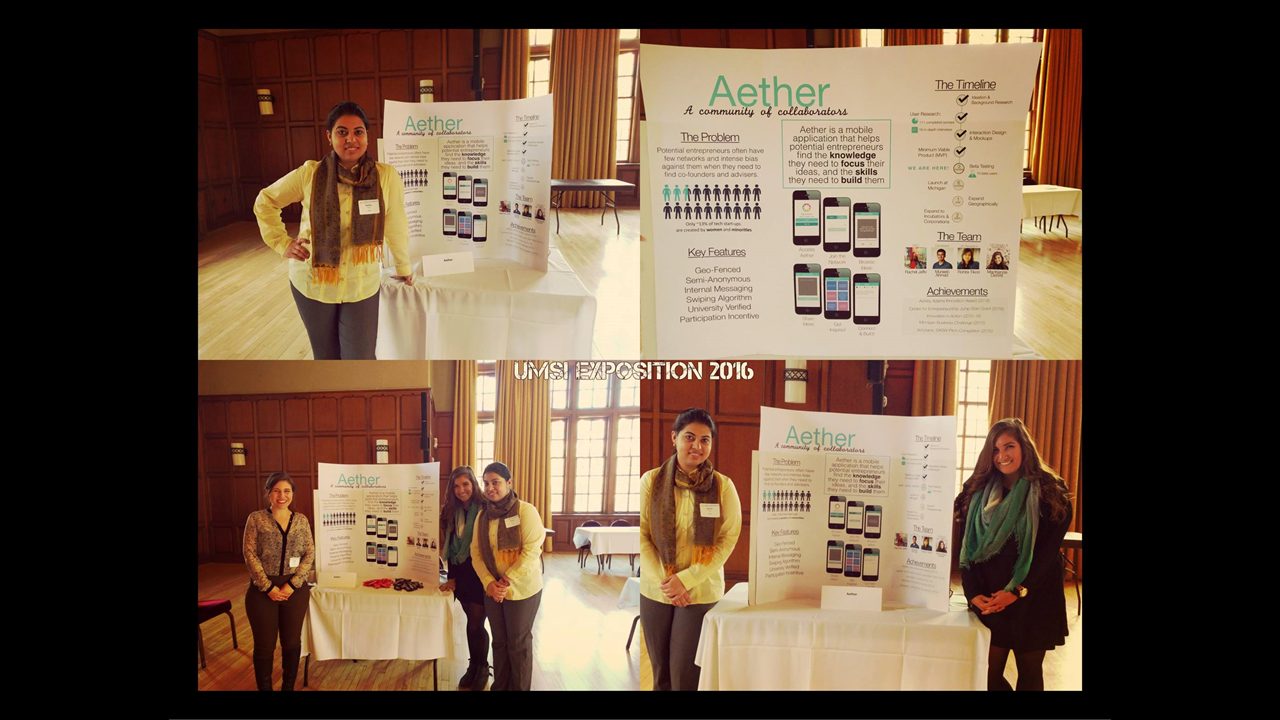
We qualified for Round 1.
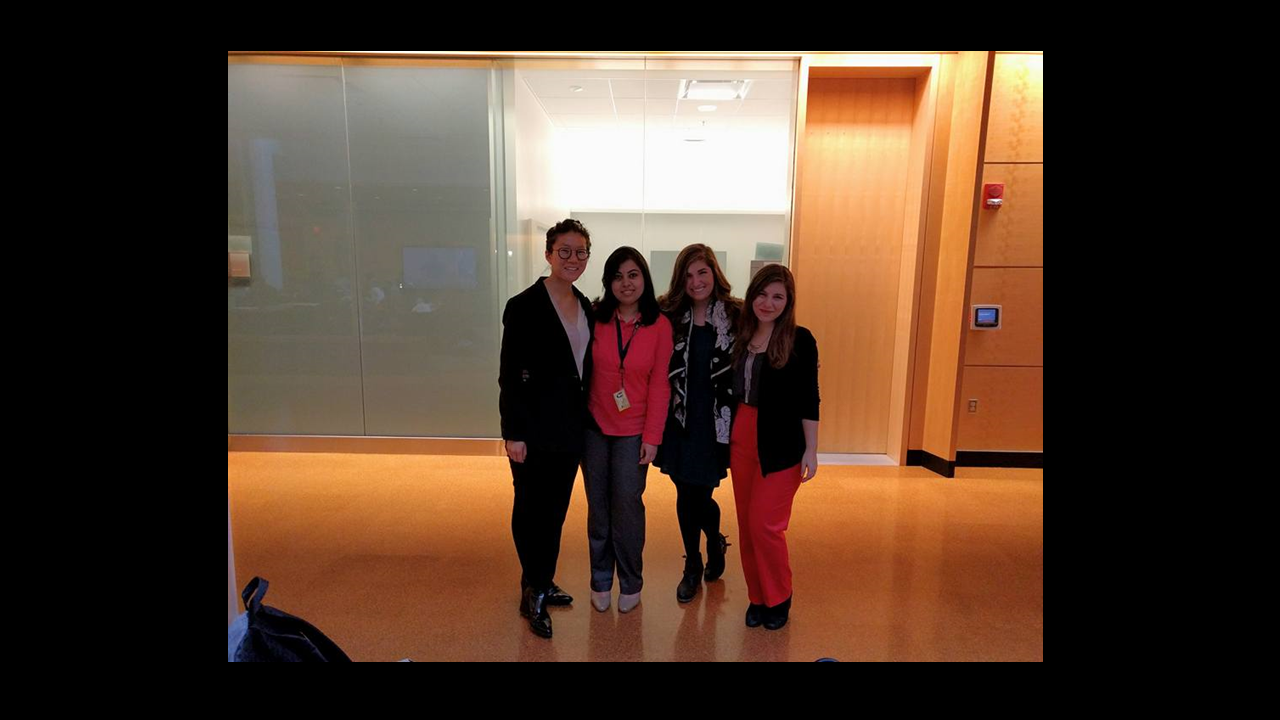
We reached the final round.
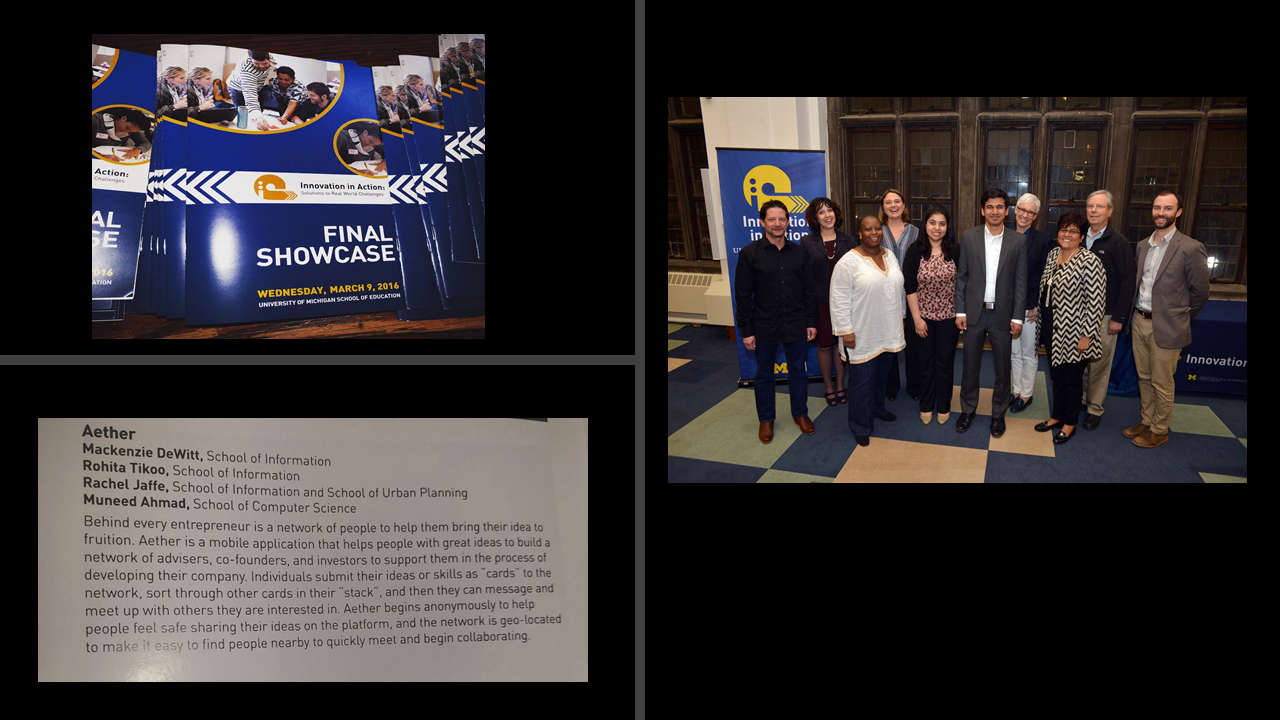
We were featured in the news for Wolverine Women to Watch in 2016.
